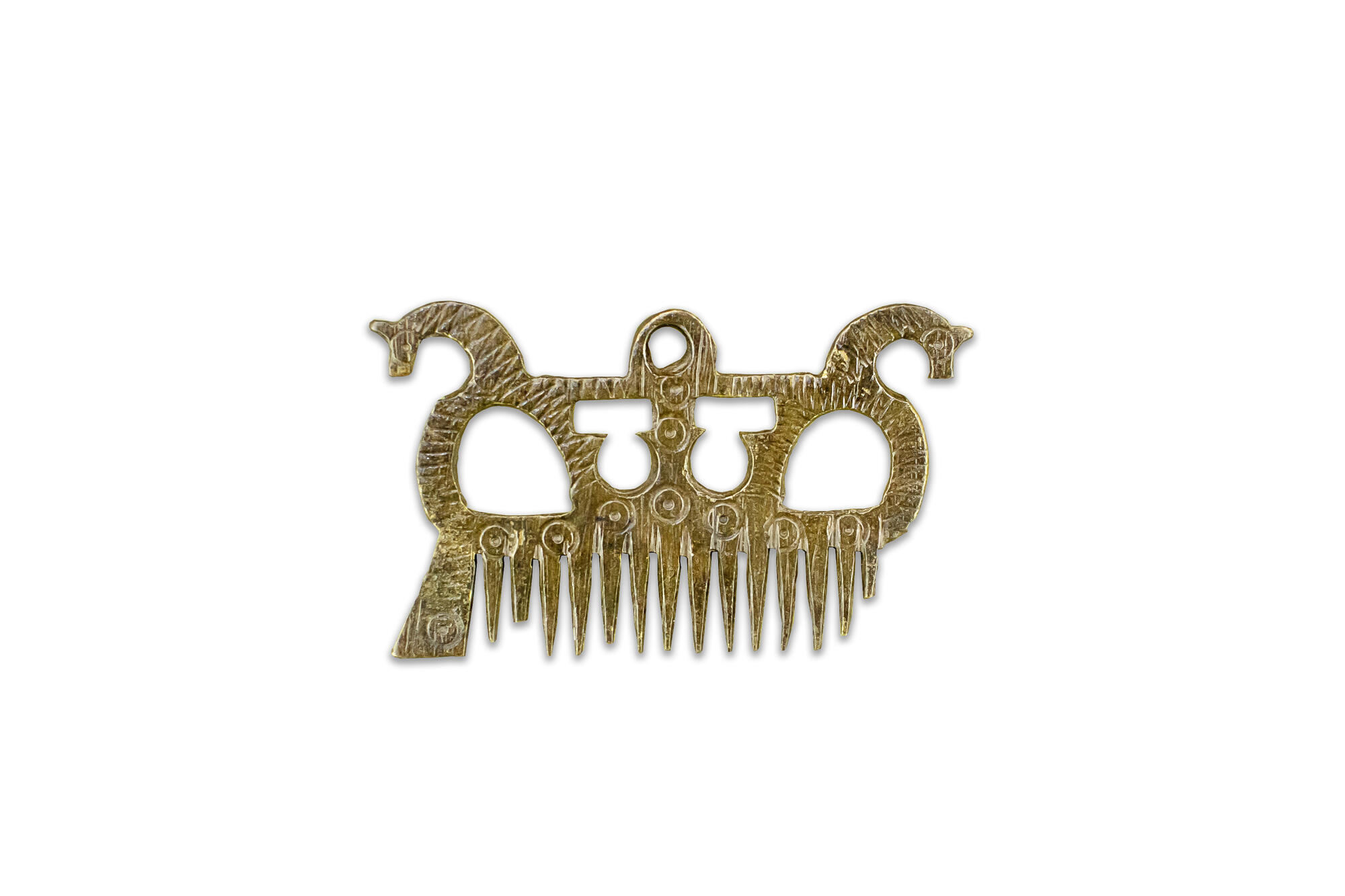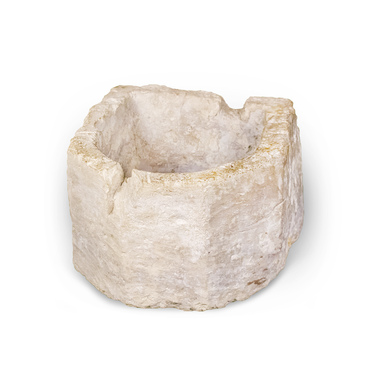The first combs used by humans were carved from bone. The earliest such accessory dates back as far back as the 3rd millennium BC, it was discovered on the Swedish island of Gotland. Later, the comb began to be used not only for combing hair: it was hung as an amulet; some tribes decorated their homes with it. In some cultures, combs were as valuable as weapons and household items, so when the owner died, they were buried with him. The objects that were placed in the burial were supposed to help the deceased in his posthumous wanderings.
On the territory of modern Russia, bone, wooden, and cast from metal combs were used. In the Medieval Volga Bulgaria, pendant combs were made of bronze.
The exhibit from the collection of the Bolgar Museum-Reserve is believed to date as far back as the 13th — 14th century. It was made applying the mixed method. The Bolgar masters first prepared an alloy of copper, i.e. bronze, and then cast a plate from it. For casting, stone or clay molds were used. Archaeologists have found traces of the casting method known as ‘a wax prototype’ when the mold was made from a wax copy of the article. However, this method was not popular then, becoming widespread later; and it is still used in different countries nowadays.
After the cast plate cooled, the Bulgars cut out teeth and a handle in it and then stamped an ornament in the form of circles with a dot in the center and zigzag notches. The openwork handle was made in the form of two ornamental horses looking in different directions. Between them, a special ring was made for hanging the comb on clothes.
Bulgars believed a horse to be a sacred animal that symbolized the sun. Therefore, it was surrounded by pagan signs such as a circular ornament associated with the star. The cult of the horse appeared among the tribes of the forest zone when agriculture and cattle breeding became their main ways of obtaining food.
The image of a horse among the Finno-Ugric tribes living in this area could be found not only on the combs. They made simple pendants that were attached to clothing or hung around the neck. Cast hooves were used as a decorative element of clothing — they were fixed with rings.
On the territory of modern Russia, bone, wooden, and cast from metal combs were used. In the Medieval Volga Bulgaria, pendant combs were made of bronze.
The exhibit from the collection of the Bolgar Museum-Reserve is believed to date as far back as the 13th — 14th century. It was made applying the mixed method. The Bolgar masters first prepared an alloy of copper, i.e. bronze, and then cast a plate from it. For casting, stone or clay molds were used. Archaeologists have found traces of the casting method known as ‘a wax prototype’ when the mold was made from a wax copy of the article. However, this method was not popular then, becoming widespread later; and it is still used in different countries nowadays.
After the cast plate cooled, the Bulgars cut out teeth and a handle in it and then stamped an ornament in the form of circles with a dot in the center and zigzag notches. The openwork handle was made in the form of two ornamental horses looking in different directions. Between them, a special ring was made for hanging the comb on clothes.
Bulgars believed a horse to be a sacred animal that symbolized the sun. Therefore, it was surrounded by pagan signs such as a circular ornament associated with the star. The cult of the horse appeared among the tribes of the forest zone when agriculture and cattle breeding became their main ways of obtaining food.
The image of a horse among the Finno-Ugric tribes living in this area could be found not only on the combs. They made simple pendants that were attached to clothing or hung around the neck. Cast hooves were used as a decorative element of clothing — they were fixed with rings.



